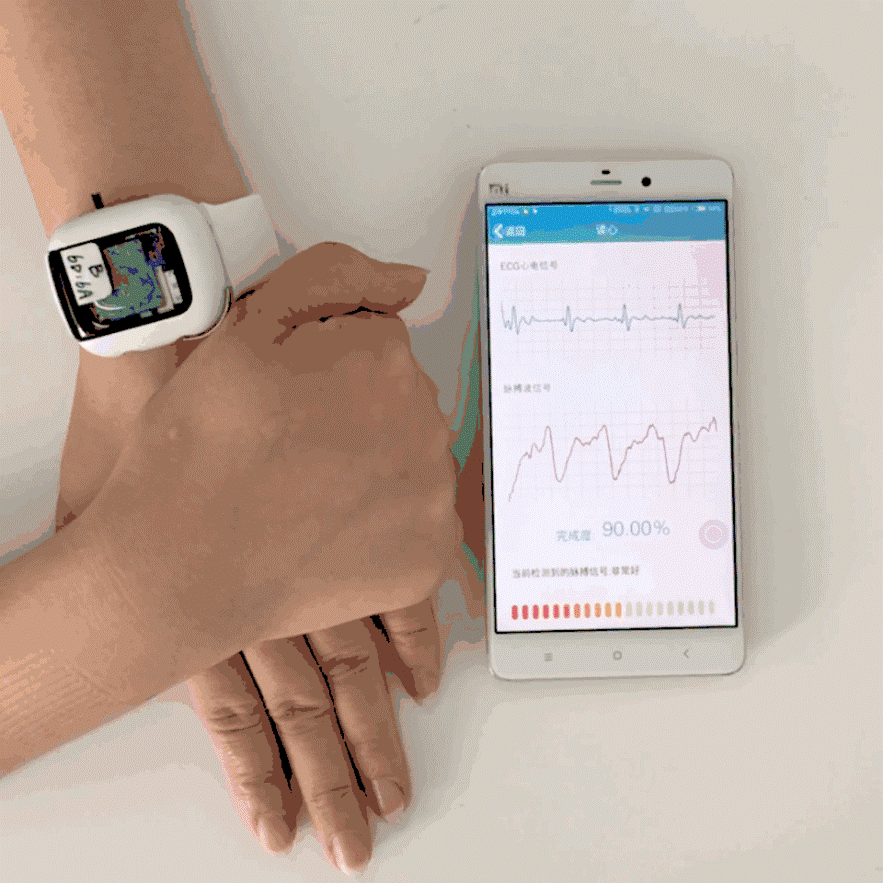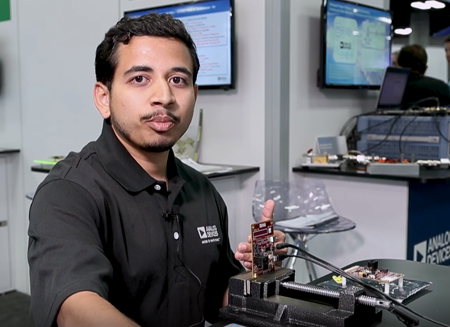As we all know, the traditional radar technology has been widely used, such as airborne, shipborne, base radar and so on to detect and image the target. In daily life, we can use radar sensors to achieve a lot of applications, such as car reversal traffic assistance, weather forecast, traffic control, resource exploration and so on.
With the development of Internet of Things (IoT), many applications rely on embedded sensors to perform key measurement tasks, or as an important part of control circuits. The development of new sensors can realize new applications. Radar sensors have become an important design unit in the Internet of Things and embedded design.
Radar sensing technology has become one of the latest "cross" sensor technologies.
In recent years, with the rapid development of semiconductor technology, the size and power consumption of many radars are greatly reduced. With the use of millimeter wave, ultra-wideband technology and multiple transmitters and multiple receivers, and the combination of innovative signal processing technology and the increasing computing power of the chip, radar perception function is becoming increasingly powerful. Radar sensing is a kind of wireless sensing technology. By analyzing the received target echo characteristics, the position, shape, motion characteristics and trajectory of the target can be extracted and found, and the characteristics of the target and environment can be inferred further. Its function is similar to human eyes and ears. Compared with other sensors, radar sensing has many unique advantages. For example, compared with visual sensors, radar is not affected by light and shade, has the ability to penetrate the occlusion, can better protect personal privacy. Compared with ultrasonic technology, radar can detect further distances, and will not cause harm to humans and animals.

Of course, the working principle of radar is not new. The roots of radar (radio direction and ranging, RAdio Direction and Ranging) can be traced back to Heinrich Hertz's experiments with radio waves in the 1980s. Before World War II, it was developed into a practical air defense tool by Sir Robert Watson Watt and others. All radar systems are based on the reflection principle of radio waves away from targets. However, in practice, various implementations will affect cost, complexity and performance. Most IOT, automotive and embedded applications usually use "short range" radar architecture. Unlike conventional high-power radar systems for navigation and military/defense, short-range radar systems are relatively close to their targets.
In addition, there are several types of short-range radar, including continuous wave (CW) Doppler, frequency modulated continuous wave (FMCW), pulse Doppler and ultra-wideband (UWB) and so on. Both CW Doppler and FMCW can be widely used as RF chipsets and operate at low power levels. This characteristic is usually very important in IoT (Internet of Things) and embedded design.
Embedded short-range radar has become one of the latest "cross" sensor technologies used in the Internet of Things and intelligent lighting, which plays an increasingly important role in the application of the Internet of Things. When applications benefit from measuring or detecting the presence, speed, direction and distance of distant objects, short-range radar may be a candidate for serious consideration.
From intelligent street lighting to motion detection from blood pressure monitoring to heart rate monitoring
Some applications have surpassed the general public's imagination of radar technology, such as building and smart home (Internet of Things), perimeter and regional security, lighting and HVAC-controlled occupancy detection, automatic door and door control, robotics, intelligent street lights (streetlights that add brightness along the path of approaching vehicles), UAVs and UAVs. UAV altimeter, industrial fluid / solid level sensing and speed measurement.
The application of radar sensing technology enables street lamps to react differently according to the different states of the target. When there is no goal, the street lamp can be completely extinguished. When the target appears, according to the distance, speed and other information of the target, whether the nearby street lights are lit or not, the degree of the lights on can be real-time intelligent control. It not only reduces energy consumption, but also reduces the loss of street lamps and prolongs the life of street lamps.
Using radar sensors to explore advanced parking vehicle detection methods, thus effectively, simple and convenient to solve a variety of parking vehicle detection problems. 24GHz radar sensor network can effectively collect urban parking space information, and the data will be transmitted to the parking management control center, which makes the allocation of parking space in the management control center more intelligent. Radar sensors, as a newly added device, are mounted downward on street lights and housing walls, from which information can be accurately inferred which areas still have parking spaces. If radar sensors are mounted at a higher position, they can scan a wider area, making it easier to detect parked vehicles in a row. Match box size sensors first emit microwave pulses, which are reflected by the streets and vehicles to obtain the corresponding location information.
Radar recognition technology can be applied to different scenarios. In sports, for example, this technique can be used to detect the movement state and track of people and balls. In the home environment, you can also do body fall detection, to prevent the fall of the elderly. At present, our technology has been able to process radar data to achieve human motion state and trajectory interpretation.
With the continuous improvement of people's living standards, people pay more and more attention to their health. It is an inevitable trend to detect heart rate and respiratory rate quickly and conveniently in real time. Traditional detection equipment is not easy to carry and has poor real-time operability. Radar wave is an electromagnetic wave, it does not change with temperature, light and other environmental factors, which greatly improves the anti-jamming ability and stability of products, through the radar wave radio frequency transceiver module to complete the heart rate and respiratory signal detection, can be achieved non-contact detection, easy to operate, reliability is relatively high. High. Radar waves can pass well through clothing and skin to detect heart rate and respiratory rate. Although the amplitude of heart rate and respiratory signals is small, the radar RF transceiver module realizes the adjustable sensitivity, and can effectively complete the detection of heart rate and respiratory signals.
Earlier this year, the media reported that a foreign company, Blumio, used radar technology to achieve innovative blood pressure monitoring. The company's products designed radar technology into arm rings worn by the upper arm (which normally measures the position of blood pressure because it is the same height as the heart), and used two radar antennas to detect it. The pulse pressure wave between heartbeats was measured and the blood pressure of the guardian was deduced by calculating the speed between two antennas. Unlike previous sphygmomanometer, it does not need to be connected to a heavy machine, and it can be continuously measured.
Domestic start-ups are also lagging behind in radar blood pressure and heart rate measurements. The core team members from Qualcomm, Broadcom, Showcase and other semiconductor companies, LOHAS TECH, have developed a non-contact arterial radar BioRF technology. The superficial arterial signal is captured by radar technology to avoid the error caused by the photoelectric sensor in capillary measurement and realize accurate measurement.

Heart rate measured by BioRF radar -- arterial blood vessel
BioRF uses near-field sensing technology to detect pulse waves in the superficial arteries of the whole body, with system design to support more imaginative medical products and algorithm development. BioRF arterial radar has the characteristics of non-pressurization and high sensitivity in intelligent blood pressure continuous monitoring. It can accurately detect superficial arterial pulse and proximal and distal arteries. Three seconds lock pulse signal, ten seconds to complete a measurement, no cuff pressure measurement.
Interestingly, a product recently introduced by ADI's product application engineer at IMS 2018 International Microwave Technology Fair has similar body signal monitoring capabilities, and ADI is developing a program to monitor human heart rate and respiratory rate.
ADI product application engineer demonstrates support for radar heart rate monitoring program in IMS2018.
The display data show that the whole system solution includes an antenna, a 24GH radar, a low-speed ADC and a fixed-point DSP integrated on a circuit board, which can be directly used as a vital signs monitoring system. When a person sits in front of the product, it transmits extremely low-power radar signals to his body, which can then be read to obtain information about the person's heart rate and breathing rate.

On the computer interface of the demo platform system, the radar RF chip collects the radio signal and converts it to IF signal, and a low-speed ADC digitizes the data. DSP sensors and algorithms can read the respiration rate and center. Rate data, the data transmitted to the computer through USB, so as to read the real-time heart rate. According to ADI's target application recommendations, the system can be used to track the driver's heart rate and analyze the driver's state. It can also be placed in a child's seat or stroller to monitor the baby's health. It can also be placed in a room to measure the hearts of people in the room. Rate, and so on.
summary
Currently, low-cost radar sensing technology and available design tools are available. These radar sensors can provide real-time information about the presence, motion, angular position, velocity of an object, and the distance between a few centimeters and hundreds of meters from the sensor to meet the performance requirements of Internet of Things, embedded and intelligent lighting applications. And function. Like past low-cost MEMS accelerometers, this could also facilitate the development of new and unexpected categories of Internet of Things products. The innovative application mentioned in this article is just the tip of the iceberg for radar application.